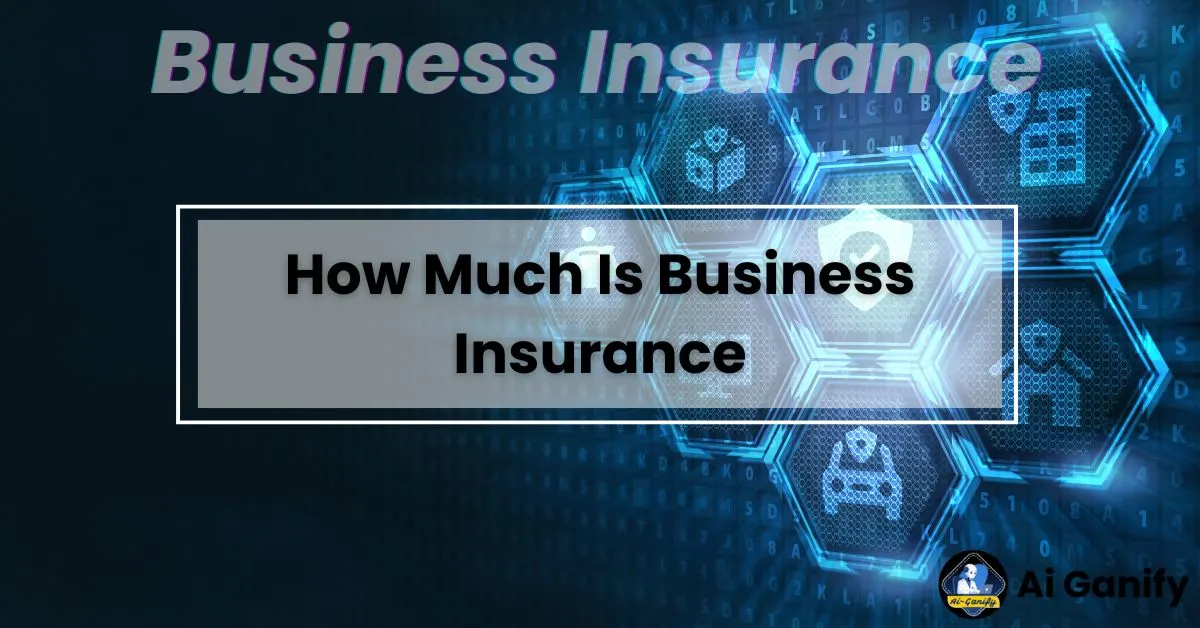
Why Business Insurance Matters & How Much It Costs
Running a Business? Here’s Why Insurance is a Must-Have
Imagine this: You’ve spent years building your business. Everything is going great—until one day, an unexpected accident, lawsuit, or disaster puts everything at risk.

This is where business insurance comes in. It’s not just another expense—it’s financial protection that keeps your business running even when things go wrong.
Whether it’s a customer slipping on your shop floor, a fire damaging your office, or a client suing for a mistake, insurance ensures you don’t pay out of pocket for costly claims.
How Much Does Business Insurance Cost? It Depends!
There’s no one-size-fits-all price for business insurance. Costs vary based on several key factors, including:
✅ Industry Type – A construction company pays way more than a freelance writer. Some industries have higher risks than others.
✅ Business Location – Running a business in New York or California? Expect higher insurance costs than in small towns or rural areas.
✅ Coverage Type & Limits – Do you need basic general liability or a full Business Owner’s Policy (BOP)? More coverage means a higher price.
✅ Claims History – If your business has made insurance claims before, expect to pay higher premiums.
✅ Number of Employees – More employees mean higher costs, especially for workers’ compensation insurance.
What You’ll Learn in This Guide
We know insurance costs can be confusing—so we’ve made it simple. In this guide, you’ll learn:
🔹 Real case studies: How much actual businesses pay for insurance.
🔹 Regional pricing insights: How much business insurance costs in different states, including Connecticut (CT).
🔹 Cost-saving strategies: Proven ways to lower your insurance premiums without sacrificing coverage.
🔹 Breakdown of insurance types: What each policy covers and costs so you can choose the right one.
By the end, you’ll know exactly what to expect when shopping for business insurance—and how to get the best deal.
Average Cost of Business Insurance: What to Expect

How Much Does Business Insurance Really Cost?
If you’re wondering, “How much will business insurance cost me?”—you’re not alone.
The truth is, there’s no fixed price because costs depend on factors like industry, location, and coverage type.
However, to make things easier, here’s what most small businesses typically pay:
2.1 General Cost Estimates: A Quick Breakdown
On average, small businesses pay between $40 to $200 per month for business insurance.
Here’s a general idea of costs based on policy type:
✅ General Liability Insurance – Around $30 to $60/month ($360–$720 per year). This covers accidents, property damage, and legal fees.
✅ Business Owner’s Policy (BOP) – Around $80 to $200/month ($960–$2,400 per year). This includes general liability + property insurance.
✅ Workers’ Compensation – Around $70 to $250/month ($840–$3,000 per year). Required if you have employees.
✅ Professional Liability (E&O Insurance) – Around $50 to $150/month ($600–$1,800 per year). Essential for consultants, real estate agents, and financial advisors.
Industry-Specific Costs: How Much Do Businesses Pay?
Certain industries pay higher insurance premiums due to their level of risk.
Here’s how costs can vary based on business type:
🛠️ Construction & Contractors – Expect to pay $150–$500/month due to workplace hazards.
🛍️ Retail & E-commerce – Costs range from $50–$150/month to cover product liability and customer injuries.
💻 Tech Startups & Freelancers – Lower risk means lower costs, typically $40–$100/month.
🏥 Healthcare Providers – Expect to pay $300–$1,500/month due to malpractice risks.
Regional Cost Differences: Where You Operate Matters
Did you know your location impacts how much you pay for insurance?
Here’s why:
🌆 Big cities (NYC, LA, Chicago) = Higher costs due to lawsuits, property values, and crime rates.
🏡 Smaller towns & rural areas = Lower costs with fewer claims and lower risks.
🏢 Certain states require extra coverage, like workers’ comp or specific liability insurance.
How Much Is Business Insurance in Connecticut (CT)?
If you’re running a business in Connecticut, here’s what you can expect:
✅ General liability – Around $50–$100/month.
✅ Business Owner’s Policy (BOP) – Around $100–$250/month.
✅ Workers’ compensation – Around $80–$300/month, depending on employee count.
Final Takeaway: Plan Your Costs Smartly
Now that you know how much business insurance costs, it’s time to find the best deal.
✅ Compare quotes from multiple providers.
✅ Adjust coverage limits based on your actual risk.
✅ Bundle policies (like a BOP) to save money.
Key Factors That Influence Business Insurance Costs
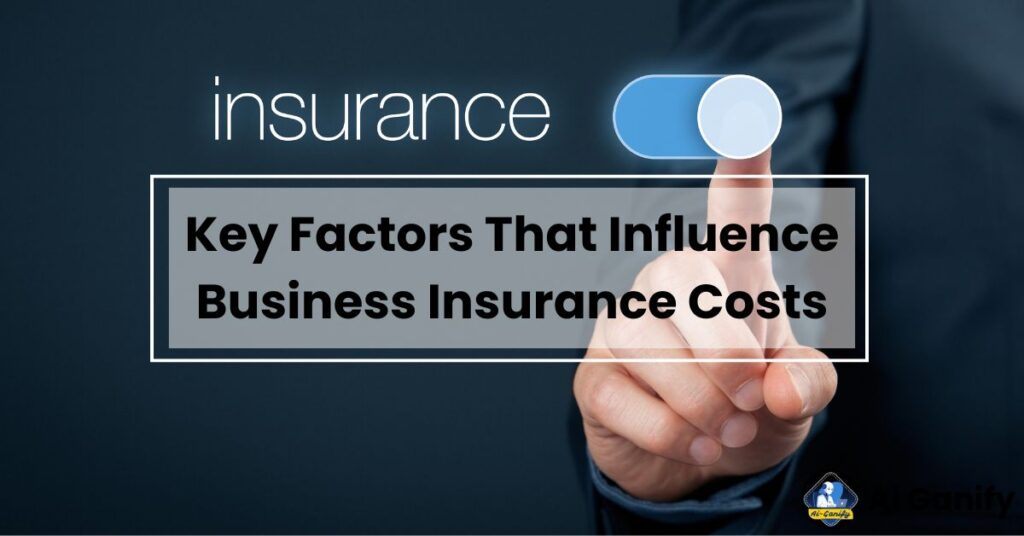
Why Do Some Businesses Pay More for Insurance Than Others?
Ever wondered why two businesses can have completely different insurance costs?
That’s because several key factors affect how much you pay for coverage.
Let’s break them down so you can better understand your premiums and find ways to lower them.
Business Type & Industry Risk Level
The type of business you run plays a huge role in your insurance cost.
Some industries naturally carry more risk, leading to higher premiums.
📍 High-Risk Businesses (Higher Insurance Costs):
🔹 Construction & Roofing – Prone to workplace accidents.
🔹 Healthcare & Medical Practices – Risk of malpractice claims.
🔹 Restaurants & Bars – High liability from food poisoning or alcohol-related incidents.
📍 Low-Risk Businesses (Lower Insurance Costs):
✅ Consulting & Freelancing – Minimal physical risk.
✅ Online Businesses – No physical store means fewer liabilities.
✅ Graphic Design & Web Development – No customer-facing risks.
Business Size & Revenue
As your business grows, so does your insurance cost.
Why? Because:
✅ More customers = More liability risks.
✅ Higher revenue = Higher potential claims payouts.
✅ Bigger offices = Higher property insurance needs.
For example, a small home-based consultant might pay $30/month, while a brick-and-mortar retail store could pay $200/month.
Location-Based Cost Differences
Where you operate affects your insurance rates.
🌆 Big cities = Higher costs (More lawsuits, crime, and property value).
🏡 Smaller towns = Lower costs (Less risk exposure).
📜 State Regulations – Some states require more coverage, increasing costs.
How Does Connecticut (CT) Compare?
In Connecticut, businesses typically pay:
✅ General liability insurance – $50–$100/month
✅ Workers’ compensation – $80–$300/month
✅ Business Owner’s Policy (BOP) – $100–$250/month
Coverage Limits & Policy Type
The more coverage you need, the more you pay.
For example:
✅ Basic General Liability ($1 million coverage limit) – Lower cost
✅ Higher Liability Limits ($5 million coverage limit) – Higher cost
✅ Specialized Policies (Cyber Insurance, Product Liability, etc.) – Adds to the cost
It’s important to balance protection with affordability.
Claims History & Risk Profile
If you’ve filed claims in the past, your insurance company sees you as a higher risk.
This can increase your premiums—just like how car insurance goes up after an accident.
Example:
📌 A retail store with zero claims history may pay $50/month for liability insurance.
📌 A similar store with multiple past claims could pay $150/month or more.
Number of Employees
The more employees you have, the higher your insurance costs—especially for workers’ compensation insurance.
📍 Workers’ Comp Average Costs:
👤 1-5 employees – $80–$300/month
👥 6-10 employees – $300–$800/month
🏢 50+ employees – $1,500+/month
Why? Because more employees = higher chances of workplace injuries.
Deductibles & Premiums
What Does Deductible Mean?
A deductible is the amount you pay out of pocket before your insurance kicks in.
Example:
If you have a $500 deductible and your claim is $2,000, you’ll pay $500, and your insurance covers the rest ($1,500).
💡 Higher Deductible = Lower Monthly Premiums
💡 Lower Deductible = Higher Monthly Premiums
Smart Tip: If you rarely file claims, choosing a higher deductible can save you money on premiums.
Final Takeaway: What Can You Do?
Now that you know what affects business insurance costs, here’s how to save money:
✅ Choose the right coverage limits—don’t overpay for what you don’t need.
✅ Maintain a clean claims history to keep premiums low.
✅ Increase your deductible if you rarely file claims.
✅ Compare quotes—never settle for the first offer.
Cost Breakdown by Business Insurance Type
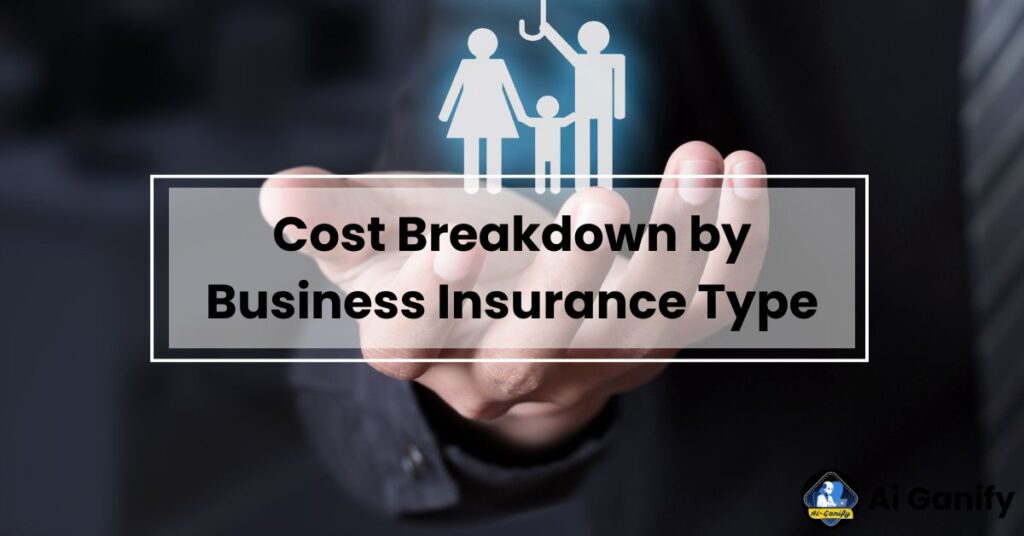
Not All Business Insurance Is the Same—Here’s What You Need to Know
Business insurance isn’t a one-size-fits-all deal.
Different businesses need different types of coverage, and each one comes with its own price tag.
Let’s break down the most common business insurance types, what they cover, and how much they typically cost.
General Liability Insurance
What Does General Liability Insurance Cover? (People Also Ask Query)
This is one of the most common policies for businesses.
It protects against third-party claims, including:
✅ Bodily Injury – If someone slips and falls at your business.
✅ Property Damage – If you accidentally damage a client’s property.
✅ Legal Fees – Covers lawsuits and settlements if someone sues you.
Example: A customer trips over a loose rug in your store and breaks their arm. Your general liability insurance covers medical expenses and legal costs.
💰 Average Cost: $50–$150 per month for small businesses.
Professional Liability Insurance
Also called Errors & Omissions (E&O) Insurance, this covers service-based businesses against claims of:
🚨 Negligence – If your advice leads to a client’s financial loss.
🚨 Mistakes – Errors in professional work.
🚨 Missed Deadlines – If a delay causes a client damages.
Example: A marketing consultant gives wrong advice, causing a client to lose $50,000 in sales. Without professional liability insurance, the consultant has to pay out of pocket.
💰 Average Cost: $60–$200 per month, depending on the industry.
Workers’ Compensation Insurance
If you have employees, this insurance is usually required by law.
It covers:
✅ Medical expenses if an employee gets hurt on the job.
✅ Lost wages if they can’t work due to injury.
✅ Legal costs if they sue for workplace injuries.
💰 Average Cost:
👤 1-5 employees – $80–$300/month
👥 6-10 employees – $300–$800/month
🏢 50+ employees – $1,500+/month
Commercial Property Insurance
If you own or rent a business space, you need commercial property insurance.
It covers:
✅ Damage from fires, storms, or vandalism.
✅ Business equipment, inventory, and furniture.
✅ Lost income if your business has to temporarily close.
🚨 What’s NOT Covered? 🚨
❌ Floods & Earthquakes – Need separate policies.
❌ Employee Theft – Covered under crime insurance.
💰 Average Cost: $80–$300 per month, depending on location and property value.
Business Owners Policy (BOP)
A Business Owners Policy (BOP) bundles multiple coverages into one affordable package.
It usually includes:
✅ General liability insurance
✅ Commercial property insurance
✅ Business interruption insurance
Why get a BOP? It’s cheaper than buying each policy separately!
💰 Average Cost: $100–$250 per month
Cyber Liability Insurance
With cybercrime on the rise, this policy is becoming a must-have—especially for online businesses and tech startups.
It covers:
✅ Data breaches – If customer data is stolen.
✅ Hacker attacks – If your website or system is compromised.
✅ Legal fees & fines – If you get sued for a data breach.
Example: A small e-commerce store suffers a data breach, exposing customer credit card information. Cyber liability insurance helps cover notification costs, legal fees, and recovery expenses.
💰 Average Cost: $75–$250 per month, depending on risk exposure.
Industry-Specific Policies
Some businesses need specialized coverage based on their industry risks.
Here are a few examples:
📌 Errors & Omissions (E&O) Insurance – For consultants, lawyers, and real estate agents.
📌 Product Liability Insurance – For manufacturers and retailers.
📌 Liquor Liability Insurance – For bars and restaurants.
📌 Commercial Auto Insurance – For delivery services and trucking companies.
💰 Average Costs:
🔹 E&O Insurance: $60–$300/month
🔹 Product Liability Insurance: $50–$200/month
🔹 Liquor Liability Insurance: $100–$500/month
🔹 Commercial Auto Insurance: $100–$300/month
Final Takeaway: Choose the Right Coverage for Your Business
Not all insurance policies are necessary for every business.
Here’s what to do next:
✅ Assess your business risks – Do you need liability protection, cyber security, or property coverage?
✅ Compare costs – Shop around for the best rates.
✅ Bundle policies – A BOP can save you money.
✅ Stay compliant – Make sure you meet state insurance laws.
👉 Also Read: Best Small Businesses To Buy (Without Risking Your Savings)
Understanding Business Insurance Terms
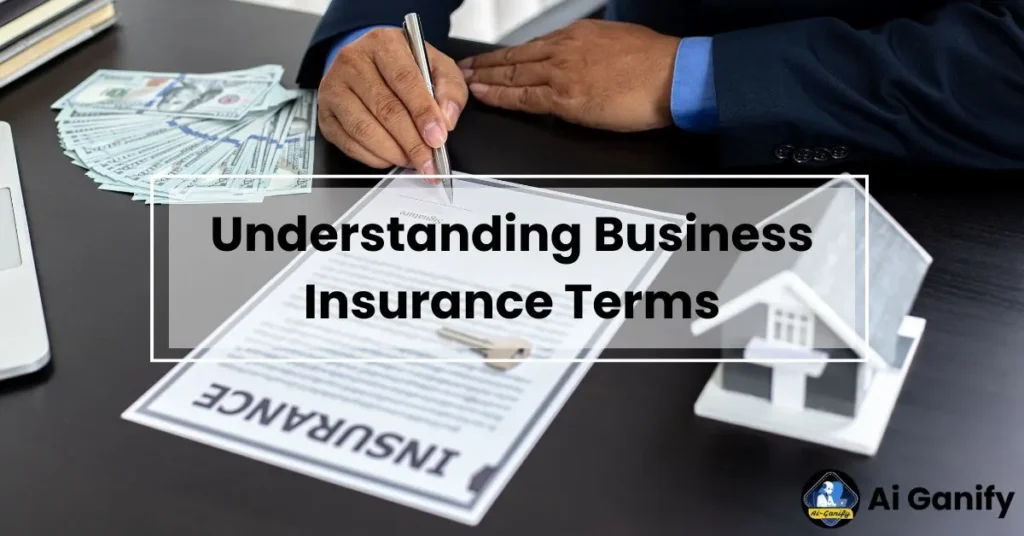
Insurance Jargon Can Be Confusing—Let’s Simplify It!
Insurance terms can feel like a different language, but understanding them is crucial for protecting your business.
Below, we’ll break down some common insurance terms with real-world examples, so you can make informed decisions without the headache.
What Is Insurance Coverage?
Coverage = Protection for Your Business
Insurance coverage refers to what your policy actually protects.
Think of it like an umbrella—it shields your business from financial losses caused by specific risks.
What’s Included in Insurance Coverage?
✅ Liability Claims – If someone sues your business for injury or damage.
✅ Property Damage – Covers damage to your office, store, or equipment.
✅ Business Interruption – If an unexpected event (like a fire) forces you to close temporarily.
What’s NOT Covered?
🚫 Intentional damage – If you cause harm on purpose.
🚫 Certain natural disasters – Floods and earthquakes often require separate policies.
🚫 Employee injuries – Handled by workers’ compensation insurance.
Example: A coffee shop has general liability insurance. One day, a customer spills hot coffee on themselves and decides to sue. The insurance covers the legal fees and medical bills, saving the business from a major financial loss.
💡 Tip: Always read the policy exclusions so you know what’s NOT covered.
What Does Deductible Mean?
A Deductible = Your Share of the Cost
A deductible is the amount you pay out of pocket before your insurance kicks in.
The higher your deductible, the lower your monthly premium (but you’ll pay more if you file a claim).
How Deductibles Work in Real Life
Let’s say:
- Your business property insurance has a $1,000 deductible.
- A storm damages your store, causing $5,000 in repairs.
- You pay $1,000, and insurance covers the remaining $4,000.
💡 Tip: If you rarely file claims, choosing a higher deductible can save you money on premiums.
What Is the Limit on Liability Insurance?
Liability Limits = Maximum Payout from Insurance
Every policy has a limit, which is the most money insurance will pay for a claim.
Two Main Types of Limits:
1️⃣ Per Occurrence Limit – The max amount paid for a single claim.
2️⃣ Aggregate Limit – The total amount the policy pays during the policy period (usually a year).
Example of Liability Limits
Imagine you have a $1 million per occurrence limit and a $2 million aggregate limit.
- First lawsuit: Costs $800,000 → Covered ✅
- Second lawsuit: Costs $1.2 million → Insurance only covers $1M, and you pay the extra $200,000 ❌
- Third lawsuit: Costs $500,000 → Covered, but now you’ve hit your $2M total limit
After that, you’re responsible for any future claims unless you renew or upgrade your policy.
Final Takeaway: Know These Terms to Protect Your Business
✅ Insurance coverage tells you what’s protected and what’s not.
✅ Deductibles affect how much you pay upfront before insurance helps.
✅ Liability limits define the max amount insurance will cover per claim and per year.
Understanding these terms helps you choose the right policy, avoid surprises, and save money.
How to Reduce Business Insurance Costs

Want to Save on Business Insurance? Here’s How!
Business insurance is essential, but overpaying isn’t.
Luckily, there are smart ways to lower your insurance costs without sacrificing the protection your business needs.
Let’s break it down into simple, actionable steps so you can keep more money in your pocket.
Compare Quotes from Multiple Providers
Not All Insurance Policies Are Priced the Same
Would you buy the first car you see without checking other options? Probably not.
The same goes for business insurance.
Each insurance company assesses risk differently, so prices can vary by hundreds (or even thousands) of dollars for the same coverage.
How to Compare Quotes the Right Way
✅ Get at least three quotes from different providers.
✅ Compare coverage details, not just price. (Cheaper isn’t always better!)
✅ Check for hidden fees or restrictions that could cost you later.
Example: A small bakery got two quotes for general liability insurance—one for $120/month and another for $85/month. The lower-priced policy excluded product liability, which meant food-related claims wouldn’t be covered.
💡 Tip: Use online insurance marketplaces to quickly compare rates from multiple providers.
Bundle Policies for Savings
One Policy vs. Multiple = Big Savings
Insurance companies reward businesses that bundle policies together.
Instead of buying separate policies, you can combine coverage into a Business Owners Policy (BOP) and save up to 25%.
What Policies Can Be Bundled?
✅ General liability insurance + commercial property insurance = BOP
✅ Workers’ compensation + commercial auto insurance
✅ Cyber insurance + professional liability insurance
Example: A small tech startup needed general liability, property, and cyber insurance. Buying them separately cost $2,500/year, but bundling them into a BOP reduced it to $1,900/year—a $600 savings!
💡 Tip: Ask your insurer about bundling options to lower your costs.
Choose the Right Deductible
Higher Deductible = Lower Premiums
A deductible is the amount you pay out-of-pocket before insurance kicks in.
Choosing a higher deductible means lower monthly premiums—but it also means you’ll pay more if you file a claim.
When to Raise Your Deductible
✅ If your business rarely files insurance claims.
✅ If you have an emergency fund to cover higher deductibles.
✅ If the premium savings outweigh the risk of a higher out-of-pocket cost.
Example: A retail store owner had a $500 deductible and paid $180/month for insurance. Raising the deductible to $1,500 lowered the premium to $120/month—saving $720 per year!
💡 Tip: Run the numbers! If the savings are significant, increasing your deductible can be worth it.
Implement Workplace Safety Measures
Fewer Claims = Lower Premiums
Insurance companies reward businesses that reduce risk.
If your workplace is safe, you’ll have fewer claims, which leads to lower insurance rates over time.
Ways to Reduce Workplace Risks
✅ Train employees on safety procedures (especially for high-risk industries).
✅ Install security systems to prevent theft or vandalism.
✅ Conduct regular maintenance on equipment and machinery.
✅ Have a clear emergency plan for fires, accidents, or cyber threats.
Example: A construction company invested in safety training for its workers. Over three years, workplace injuries dropped by 40%, leading to a 20% reduction in workers’ compensation insurance costs.
💡 Tip: Some insurers offer discounts for businesses with certified safety programs.
Regularly Review & Update Policies
Your Business Changes—Your Insurance Should Too
Many business owners overpay for insurance because they never review their policies.
Why Updating Your Policy Matters
✅ If your business has grown, you might need higher coverage limits.
✅ If you’ve downsized, you may be paying for coverage you no longer need.
✅ If you’ve moved locations, insurance costs may be higher or lower based on your new area.
Example: A freelance graphic designer had cyber insurance for $1M in coverage when she had 10 clients. After scaling down to just 2 clients, she reduced coverage to $500K, saving $400 per year.
💡 Tip: Review your policy every year to adjust coverage based on your business needs.
Final Takeaway: Save Money Without Losing Coverage
✅ Compare multiple quotes to get the best rate.
✅ Bundle policies to save money.
✅ Increase your deductible if it makes financial sense.
✅ Improve workplace safety to prevent claims.
✅ Review your policy yearly to avoid unnecessary costs.
Every dollar saved on insurance = More money to grow your business!
👉 Also Read: Best Small Businesses To Buy (Without Risking Your Savings)
How to Get a Business Insurance Quote (Step-by-Step Guide)
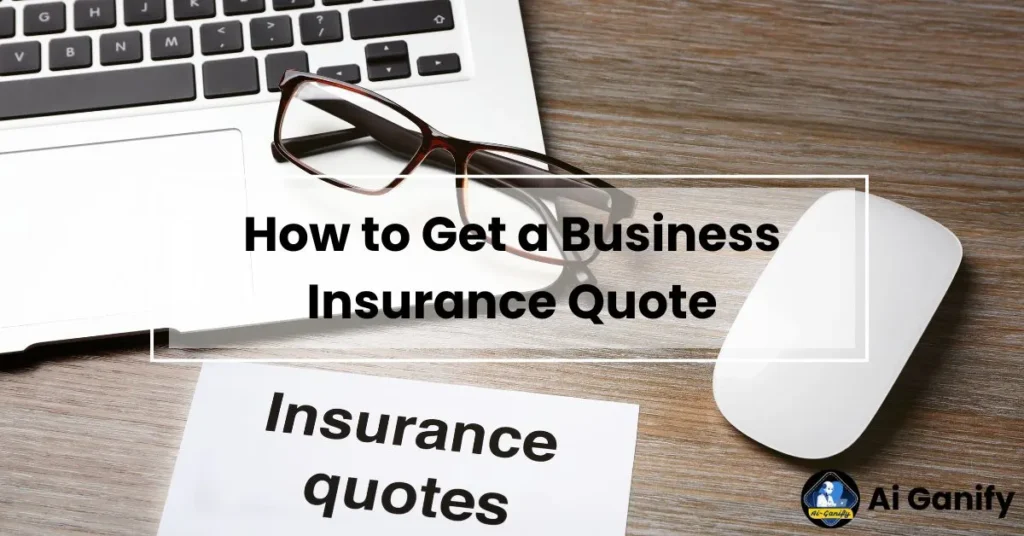
Want Business Insurance? Here’s How to Get the Right Quote!
Getting a business insurance quote shouldn’t feel like rocket science.
With the right approach, you can quickly find the best coverage at a price that makes sense.
This guide will walk you through the process so you know exactly what to expect and how to avoid overpaying.
What Insurers Need to Provide an Accurate Quote
Insurance Companies Need Information to Give You the Best Price
Before getting a quote, insurers need details about your business, revenue, employees, and history.
Having this information ready ahead of time makes the process faster and smoother.
Key Information You’ll Need
✅ Business Details – Name, industry, location, and years in business.
✅ Revenue & Payroll – How much your business makes and how many employees you have.
✅ Claims History – Past insurance claims (if any) over the last 3-5 years.
✅ Property & Equipment – If you own a storefront, office, or expensive business equipment.
Example: A freelancer working from home won’t need to provide as much information as a restaurant owner with employees and a physical location.
💡 Tip: If you’ve had no prior claims, some insurers offer discounts for being a low-risk business.
Online Quote vs. Working with an Insurance Agent
Should You Get a Quote Online or Talk to an Agent?
There are two ways to get a business insurance quote:
1️⃣ Online Quote: Fast and convenient but may not give customized options.
2️⃣ Insurance Agent: Takes longer but provides expert advice and ensures proper coverage.
Pros & Cons of Each Method
| Method | Pros | Cons |
|---|---|---|
| Online Quote | Quick, easy, and available 24/7 | Limited options, may miss key coverage |
| Insurance Agent | Personalized advice, helps find discounts | Takes more time, may cost extra |
Example: A small e-commerce business selling digital products can likely get the right coverage online. But a construction company might need expert guidance to ensure it’s fully protected.
💡 Tip: If your business has complex risks, working with an agent is a better choice.
Recommended Insurance Providers Based on Business Type
Not All Insurers Are the Same—Pick One That Fits Your Business
Some insurance providers specialize in small businesses, while others focus on high-risk industries.
Here’s a breakdown of the best insurance providers based on different business types.
Best for Small Businesses & Freelancers
✔ Next Insurance – Affordable, online-friendly, and great for freelancers.
✔ Hiscox – Tailored policies for consultants, photographers, and designers.
✔ Thimble – Short-term coverage for project-based businesses.
Best for Retail & Brick-and-Mortar Stores
✔ State Farm – Strong reputation and great customer support.
✔ Nationwide – Business Owner’s Policies (BOPs) with bundling discounts.
Best for High-Risk Industries (Construction, Restaurants, Trucking)
✔ The Hartford – Specializes in high-risk businesses with strong workers’ comp coverage.
✔ Travelers – Great for construction companies needing liability coverage.
✔ Progressive – The top choice for commercial auto insurance (trucks, delivery vans).
Final Thoughts: Get the Best Quote Without Overpaying
✅ Have your business details ready before requesting a quote.
✅ Decide between an online quote or working with an agent based on your needs.
✅ Choose an insurer that specializes in your business type for the best coverage.
The goal isn’t just to get insurance—it’s to get the right insurance at the right price.
Case Studies: Real Businesses & Their Insurance Costs
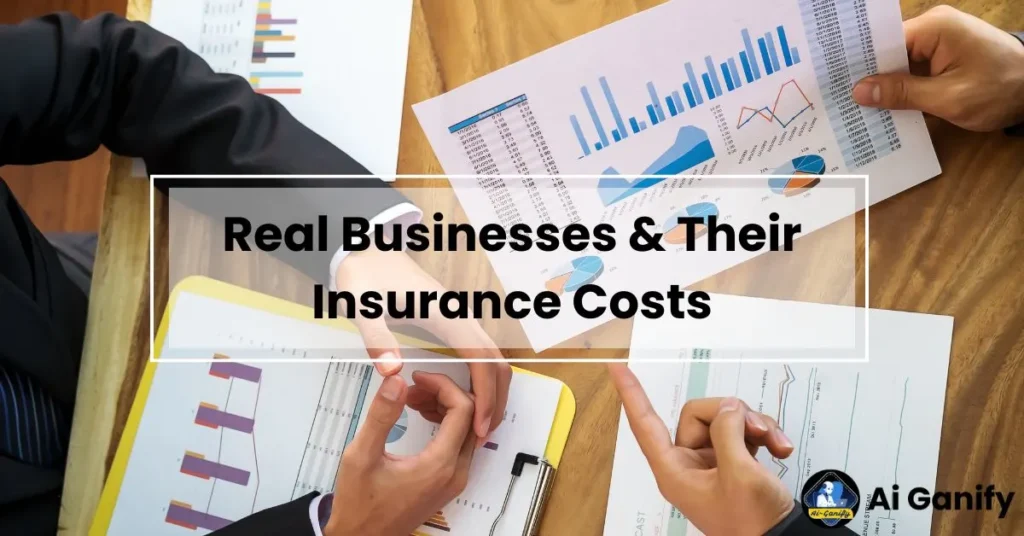
Real Stories. Real Numbers. Real Protection.
Ever wondered how much business insurance really costs?
Instead of just throwing numbers at you, let’s dive into real-world examples of how different businesses handle their insurance needs.
These case studies will give you a clear picture of what coverage looks like and how business owners save money while staying protected.
Small Retail Shop in Connecticut
How Much Does a Small Retail Store Pay for Insurance?
Meet Sarah, owner of a boutique clothing shop in New Haven, Connecticut.
She wanted affordable insurance that would cover her store, inventory, and potential customer injuries.
Her Insurance Breakdown & Costs
📌 General Liability Insurance – $60/month (Covers customer slips & falls)
📌 Commercial Property Insurance – $90/month (Covers fire, theft, or vandalism)
📌 Business Owner’s Policy (BOP) – $120/month (Bundle for liability + property insurance)
💡 Total Monthly Cost: $120 (instead of $150, thanks to a bundled BOP plan!)
Sarah saved $30/month by bundling her policies into a Business Owner’s Policy (BOP).
Why It Mattered: One day, a customer slipped on a wet floor in her store. Her liability insurance covered the medical bills, avoiding a costly lawsuit.
Freelance Consultant
Do Freelancers Really Need Insurance? (Yes, Here’s Why!)
Mark is a freelance business consultant who helps small businesses with marketing strategies.
He thought, “I don’t have a storefront or employees. Do I even need insurance?”
Then, a client sued him for giving “bad advice” that allegedly caused financial loss.
His Insurance Choice & Savings
📌 Professional Liability Insurance (E&O) – $40/month (Covers claims of negligence or errors)
💡 Total Monthly Cost: $40
Because Mark had E&O insurance, his legal fees were covered, and he didn’t have to pay thousands out of pocket.
💡 Lesson Learned: Even service-based businesses need protection from unhappy clients.
Tech Startup with Cyber Insurance
Why Cyber Insurance Is a Must for Online Businesses
Meet Lucas, founder of TechFlow, a small SaaS startup.
His biggest concern? Cyber threats and data breaches.
One day, hackers stole customer data, and his company had to notify customers and hire IT specialists to fix the issue.
His Insurance Plan & Costs
📌 Cyber Liability Insurance – $120/month (Covers hacking, data breaches, and cyberattacks)
💡 Total Monthly Cost: $120
Because Lucas had cyber liability insurance, his policy covered the cost of IT recovery, legal fees, and customer notifications—saving his startup over $20,000!
Final Thoughts: Protect Your Business Without Overspending
✅ Retail store owners can save money by bundling their policies.
✅ Freelancers need professional liability insurance to avoid legal risks.
✅ Tech startups should invest in cyber insurance to prevent financial losses.
Want to know which insurance plan fits your business? Get a quote today and protect your hard work!
👉 Also Read: Best Small Businesses To Buy (Without Risking Your Savings)
Conclusion: Protect Your Business the Smart Way
Key Takeaways: What You’ve Learned So Far
✅ Business insurance isn’t a luxury—it’s a necessity.
✅ Different businesses need different types of coverage.
✅ Comparing quotes helps you get the best price without sacrificing protection.
✅ Bundling policies, choosing the right deductible, and improving workplace safety can save you money.
Your Business, Your Future—Make the Right Choice
Insurance is like a safety net—you don’t think about it until you need it.
But when that moment comes, having the right coverage can save you from major financial loss.
Whether you’re a small retail shop, a freelancer, or a tech startup, there’s a policy that fits your needs.
Next Steps: Get Covered Today!
Don’t leave your business unprotected.
Take five minutes to compare quotes and find a policy that gives you peace of mind.
💡 Get a free business insurance quote today and secure your future!
